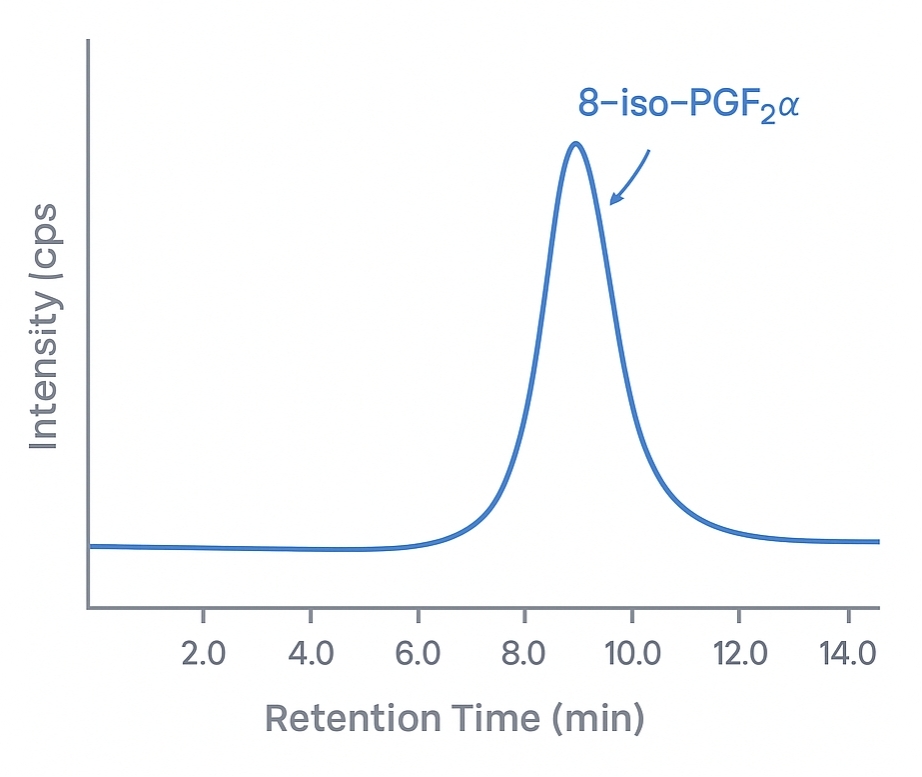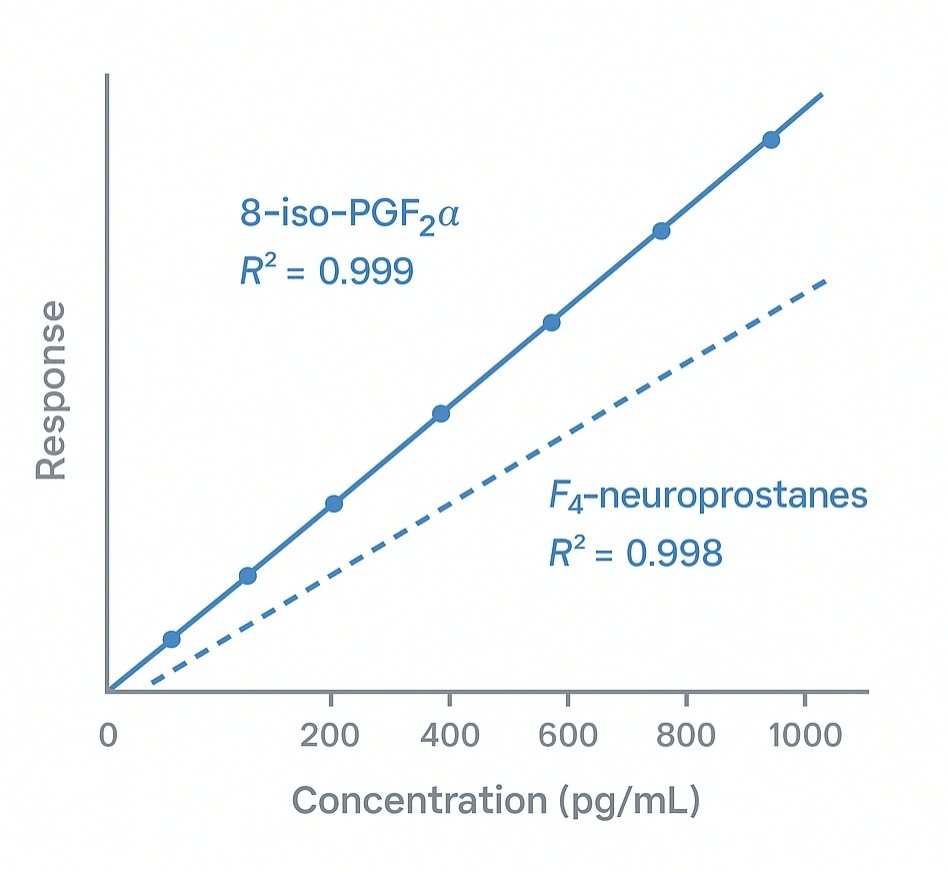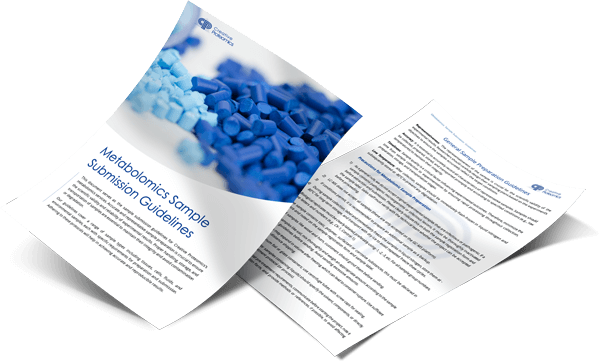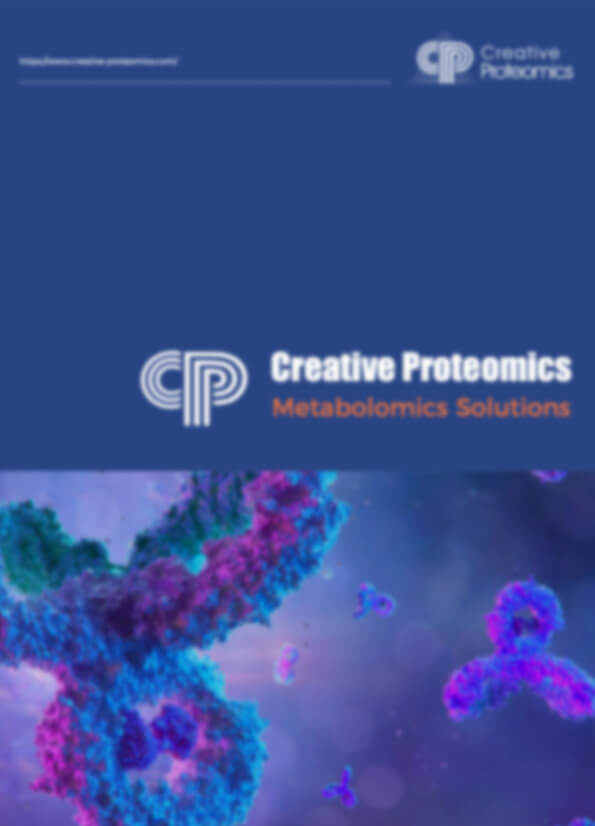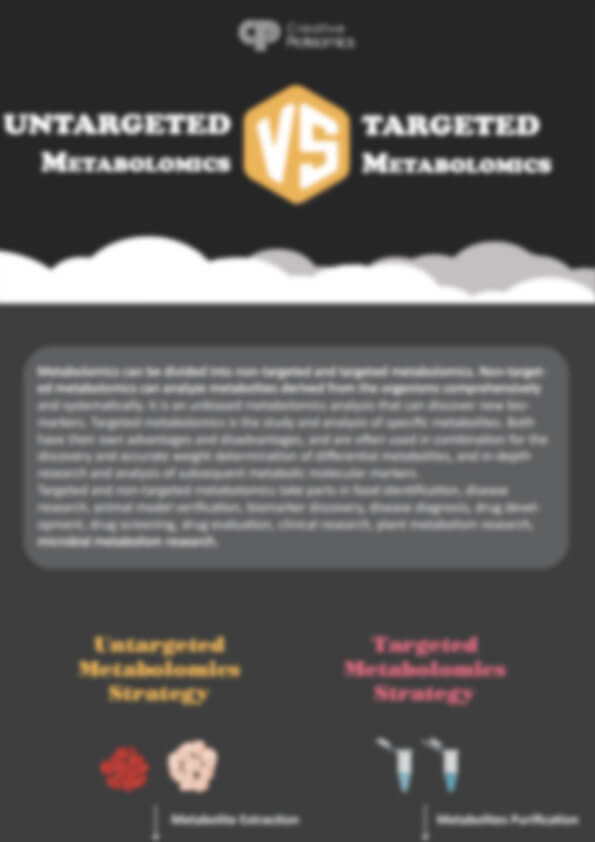Isoprostanes Analysis Service
Accurate measurement of isoprostanes is key for understanding oxidative processes in research, quality control, and product development. Creative Proteomics provides high-sensitivity analysis services to help you gain precise insights into lipid peroxidation and oxidative stress.
With our Isoprostanes Analysis Services, you can:
- Detect and quantify oxidative changes in diverse samples
- Assess the stability and quality of biological or industrial materials
- Monitor oxidative effects in environmental or production contexts
- Obtain reliable data for research publications or internal studies
Why Choose Creative Proteomics?
- Detection limits as low as 2 pg/mL
- Clear separation of complex isomeric compounds
- Excellent reproducibility (CV < 5%)
- Customizable panels for different project needs
- Detailed reports with comprehensive data interpretation
Submit Your Request Now
×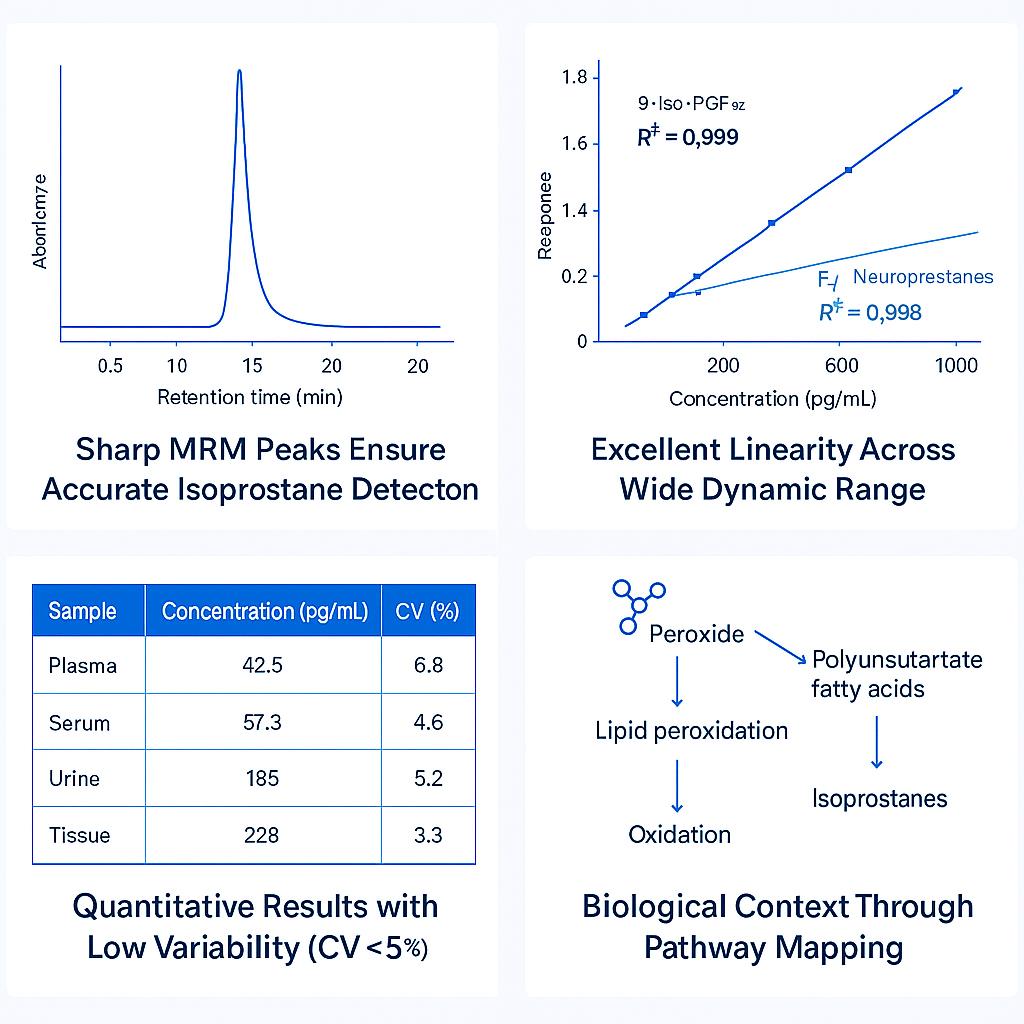
What You'll Receive:
- Raw and processed chromatograms
- Quantitative concentration tables
- Calibration curves with R² values
- Method validation summary
- Optional pathway analysis diagrams
- What We Provide
- Advantages
- Technology Platform
- Sample Requirement
- Demo
- FAQ
What is Isoprostanes?
Isoprostanes, chemically known as 1,4-diaminobutane, is a fundamental polyamine intricately involved in cellular processes such as cell proliferation, stress response, and metabolic regulation. Originating from the decarboxylation of ornithine, putrescine acts as a precursor to higher polyamines, including spermidine and spermine, influencing molecular interactions with DNA, RNA, and proteins. It is also associated with metabolic networks spanning amino acid catabolism, nitrogen cycling, and signaling pathways across biological kingdoms—from plants to bacteria to mammals.
Why Analyze Isoprostanes?
Lipid peroxidation and oxidative stress are implicated in numerous biological processes, from cellular homeostasis to the pathogenesis of diseases and aging. Measuring isoprostane provides critical insights in contexts such as:
- Biomedical Research: Mapping oxidative damage in preclinical models; investigating disease mechanisms related to neurodegeneration, inflammation, and metabolic syndromes.
- Pharmaceutical Development: Evaluating drug candidates' antioxidant efficacy and safety profiles.
- Nutritional Science: Assessing the impact of dietary interventions, antioxidants, and functional foods on oxidative stress markers.
- Environmental and Toxicological Studies: Monitoring oxidative insults from pollutants, chemicals, or industrial exposures.
Quantifying isoprostanes enables precise evaluation of oxidative stress status, informing both fundamental research and industrial applications where redox balance and lipid integrity are crucial.
Isoprostanes Analysis Service Offered by Creative Proteomics
Quantification of Free and Esterified Isoprostanes
Precise measurement of free isoprostanes in biological matrices, as well as analysis of esterified isoprostanes embedded within lipid membranes, to capture both circulating and tissue-bound oxidative stress markers.
Stereoisomer Profiling and Quantification
High-resolution separation and quantification of individual isoprostane isomers, enabling detailed investigation into specific oxidative pathways and biological effects.
Analysis of Related Oxidized Lipid Metabolites
Concurrent detection of lipid peroxidation products and polyunsaturated fatty acid (PUFA) metabolites, supporting comprehensive mapping of oxidative stress networks.
Multi-Analyte Panel Integration
Customizable panels that integrate isoprostanes with additional oxidative stress biomarkers or lipid mediators, enhancing data complementarity and study efficiency.
Method Development and Customization
Tailored assay development to meet unique project requirements, including optimization for sensitivity, expanded analyte coverage, and adaptation to complex or unconventional sample types.
Quantitative Reporting and Bioinformatics Analysis
Comprehensive data deliverables including calibration curves, quantified results, statistical evaluations, and optional pathway analyses to empower meaningful biological interpretation.
List of Detectable Isoprostanes and Related Metabolites
| Analyte / Metabolite | Alternative Names | Typical Detection Range (pg/mL or ng/g) |
|---|---|---|
| 8-iso-PGF₂α | 15-F₂t-Isoprostane | 5 – 300 pg/mL |
| 8-iso-PGE₂ | 10 – 500 pg/mL | |
| 5-iso-PGF₂α-VI | 5 – 200 pg/mL | |
| 15-epi-8-iso-PGF₂α | 5 – 300 pg/mL | |
| 8-iso-15-keto-PGF₂α | 5 – 200 pg/mL | |
| F₃-Isoprostanes | 8-iso-PGF₃α; derived from EPA | 10 – 500 pg/mL |
| F₄-Neuroprostanes | Derived from DHA | 10 – 600 pg/mL |
| F₂-dihomo-isoprostanes | Derived from adrenic acid | 5 – 300 pg/mL |
| F₂t-dihomo-isoprostane-VI | 17(RS)-10-epi-SC-Δ8-11-dihomo-IsoP | 5 – 200 pg/mL |
| 8-iso-PGF₁α | 5 – 200 pg/mL | |
| Isofurans | 5 – 500 pg/mL | |
| 8-iso-PGE₁ | 5 – 200 pg/mL | |
| D₂/E₂-Isoprostanes | 5 – 300 pg/mL | |
| 8-iso-15-keto-PGE₂ | 5 – 200 pg/mL | |
| Phytoprostanes | From α-linolenic acid (plant-derived) | 5 – 400 pg/mL |
| Phytofurans | Plant-derived oxidation products | 5 – 400 pg/mL |
| Arachidonic Acid (AA) | Precursor fatty acid | Variable |
| Docosahexaenoic Acid (DHA) | Precursor fatty acid | Variable |
| Eicosapentaenoic Acid (EPA) | Precursor fatty acid | Variable |
Custom panels available based on compound structure or species.
Advantages of Isoprostane Assay
- Low Limits of Detection: As low as 0.01 ng/mL for putrescine in complex biological matrices.
- Excellent Linearity: Correlation coefficients (R² > 0.999) across calibration ranges.
- Wide Dynamic Range: Spanning 3–5 orders of magnitude, accommodating diverse sample concentrations.
- Matrix Versatility: Validated for food, biofluids, cell culture, plant extracts, and fermentation media.
- Batch Consistency: Coefficient of variation (CV) typically<5%, ensuring reproducibility across large sample sets.
Methods and Instrumentation for Isoprostane Analysis
- Agilent 6495C Triple Quadrupole LC-MS/MS: Delivers ultra-sensitive detection and clear separation of isoprostane isomers, ideal for low-concentration analyses.
- Agilent 7890B-5977A GC-MS: Used for analyzing derivatized isoprostanes, providing reliable confirmation of results.
- Agilent 1260 Infinity II HPLC: Ensures high-quality chromatographic separation in LC-MS/MS workflows, enhancing analytical accuracy.
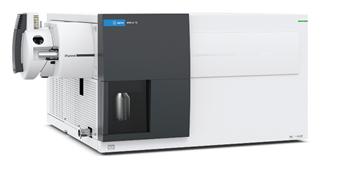
Agilent 6495C Triple Quadrupole (Figure from Agilent)
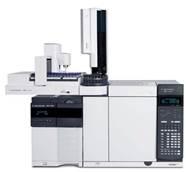
Agilent 7890B-5977A (Figure from Agilent)
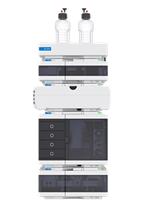
Agilent 1260 Infinity II HPLC (Fig from Agilent)
Our Isoprostanes Assay Workflow
1. Project Consultation
Discuss analytical goals, target analytes, and matrix-specific considerations with our scientific team.
2. Sample Preparation
Employ optimized extraction and cleanup protocols tailored to each sample type to isolate isoprostanes effectively.
3. Instrumental Analysis
Perform targeted quantification using LC-MS/MS or GC-MS platforms, ensuring high specificity and sensitivity.
4. Data Processing & Validation
Analyze chromatograms, confirm compound identity, and quantify concentrations using calibration curves and internal standards.
5. Reporting
Deliver comprehensive reports, including quantitative data, quality control metrics, and optional biological interpretation or pathway mapping.
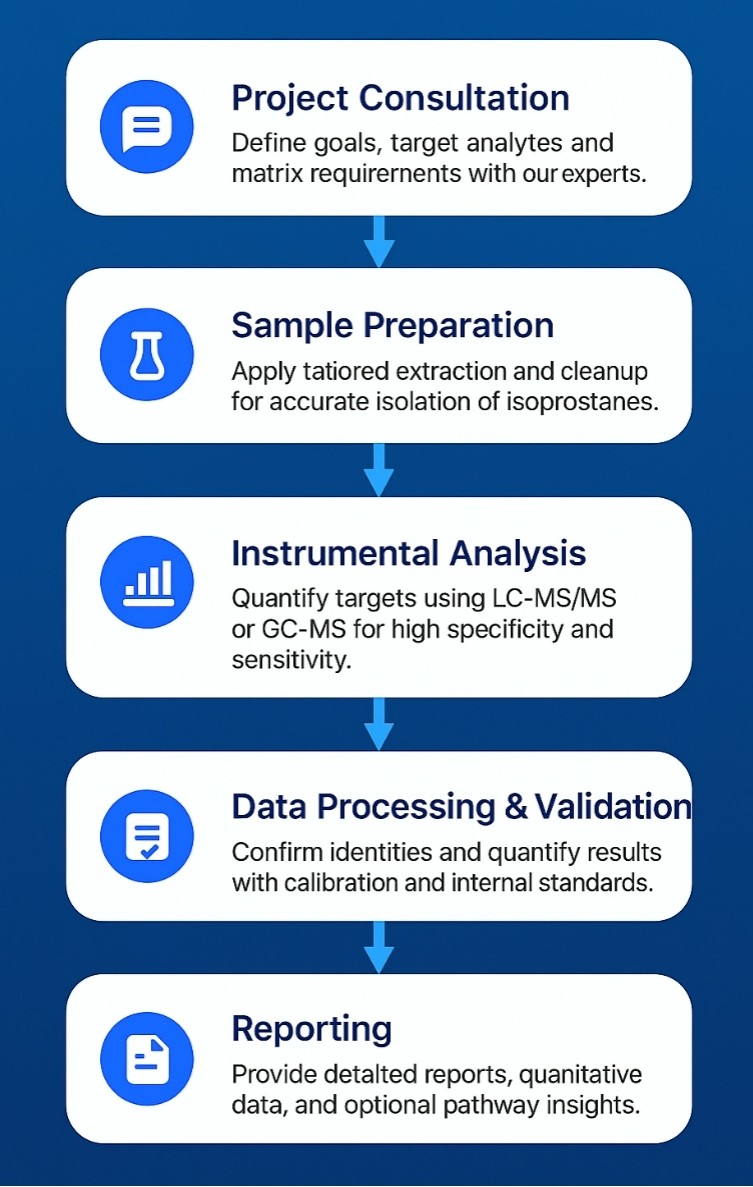
Sample Requirements for Isoprostanes Analysis Service
| Sample Type | Minimum Volume / Weight | Container Type | Storage Conditions |
|---|---|---|---|
| Serum / Plasma / Urine | ≥ 200 μL | Cryovial | -80°C |
| Food Samples (solid) | ≥ 1 g | Sterile tube | -20°C |
| Plant Tissues | ≥ 100 mg | Sterile tube | -80°C |
| Fermentation Broth | ≥ 2 mL | Sterile tube | -20°C |
| Cell Pellets | ≥ 1 x 10⁶ cells | Cryovial | -80°C |
| Culture Media | ≥ 1 mL | Sterile tube | -20°C |
Demo Results
Isoprostanes Analysis Service Case Study
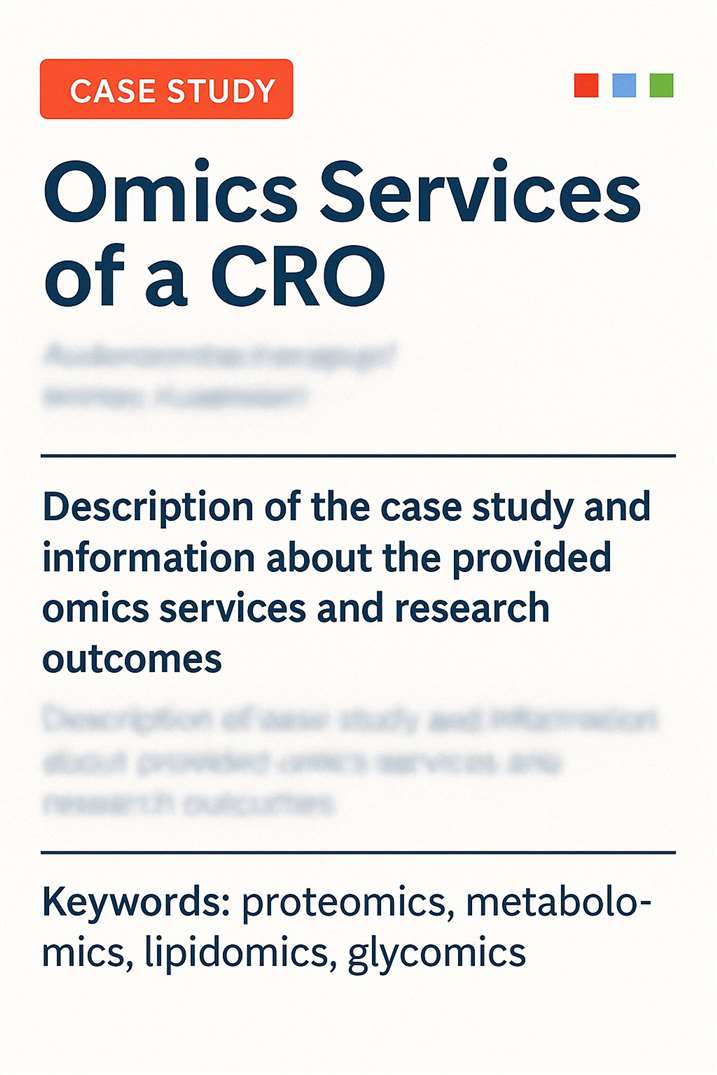
Title: LC-MS/MS Determination of Isoprostanes in Plasma Samples Collected from Mice Exposed to Doxorubicin or Tert-Butyl Hydroperoxide
Journal: International Journal of Molecular Sciences
Published: 2013
- Study Summary
- Background
- Methods
- Results
- Reference
This study developed and validated an LC-MS/MS method for simultaneous quantification of four regioisomers of F₂-isoprostanes in mouse plasma, and applied it to evaluate oxidative stress levels induced by doxorubicin (DOX) and tert-butyl hydroperoxide (TBHP). The approach allows precise measurement of lipid peroxidation markers using small plasma volumes, relevant for animal experiments or broader metabolomics applications.
Isoprostanes are stable products of arachidonic acid peroxidation via free radical mechanisms and are recognized as reliable biomarkers for oxidative stress. Elevated levels have been linked to various diseases and physiological disturbances. Traditional detection methods like GC-MS require complex derivatization steps, while ELISA assays often measure only a single isomer and can suffer from cross-reactivity. LC-MS/MS offers a faster, more sensitive, and specific alternative, enabling simultaneous detection of multiple isoprostanes even in small biological samples, making it highly suitable for research and industrial applications.
This study quantified four isoprostane regioisomers—8-iso-PGF₂α, 8,15-iso-PGF₂α, 11β-PGF₂α, and 15(R)-PGF₂α—in mouse plasma using LC-MS/MS. Key analytical steps included:
Sample Preparation:
- Plasma volumes as low as 20–100 μL
- Spiking with deuterated internal standard (8-iso-PGF₂α-d₄)
- Solid-phase extraction (SPE) for purification
Chromatographic Separation:
- Agilent 1200 HPLC system
- Zorbax Eclipse XDB column
- Gradient elution with formic acid in water and methanol:acetonitrile mix
Mass Spectrometry Detection:
- API 4000 triple quadrupole MS
- Negative ESI mode
- Multiple reaction monitoring (MRM) transitions for each isomer
Performance Highlights:
- Calibration range: 50 – 5000 pg/mL
- Excellent linearity (R² = 0.999)
- Detection limits in low pg/mL range
- Recoveries ~98–101% with RSD < 9%
![]() Creative Proteomics offers equivalent LC-MS/MS solutions, enabling:
Creative Proteomics offers equivalent LC-MS/MS solutions, enabling:
- Custom assay development for isoprostanes and lipid oxidation products
- Validation and quantification of specific isomers
- Analysis of low-volume, complex biological or industrial samples
The LC-MS/MS method successfully separated and quantified the four isoprostane regioisomers without interference from other plasma components.
In plasma samples from mice treated with oxidative stress inducers:
- DOX and TBHP both significantly increased levels of 8,15-isoP and 15-isoP by ~48–70% compared to controls.
- 8-isoP increased significantly only in TBHP-treated mice.
- 11-isoP levels showed no significant change.
The method demonstrated high sensitivity, specificity, and the capability to handle small plasma volumes, making it practical for animal experiments and potentially broader metabolomics or lipidomics applications.
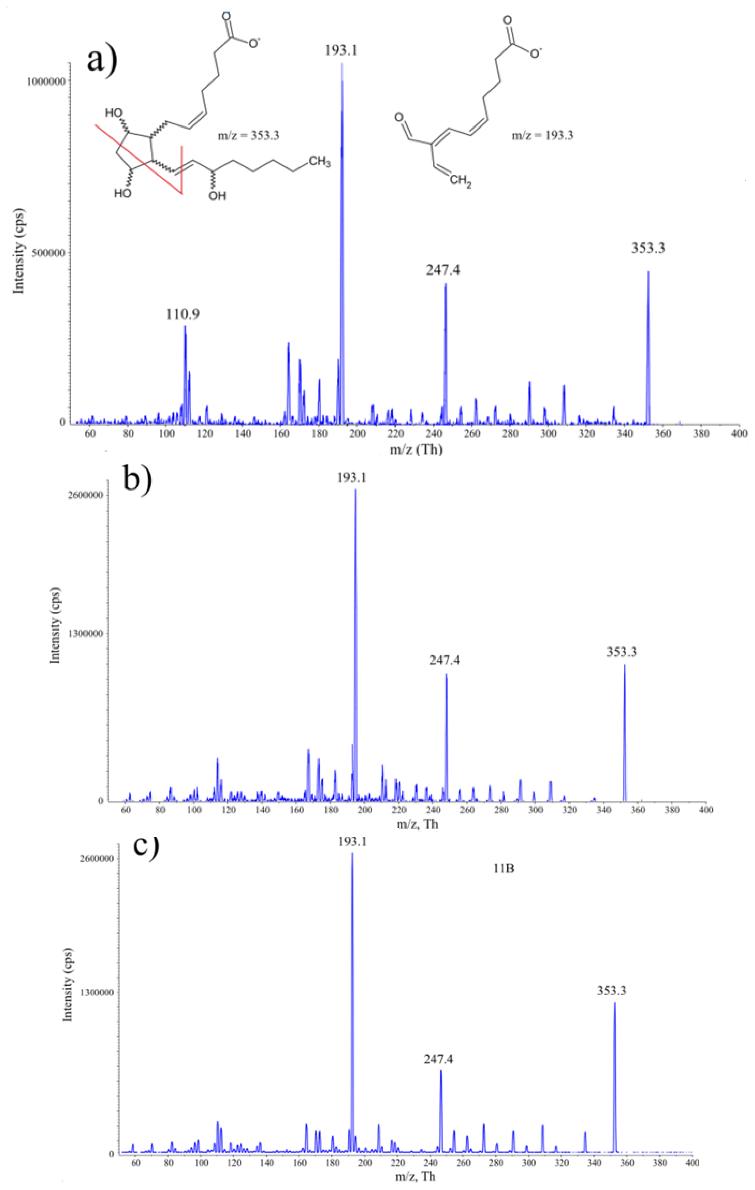 Mass spectra of four isoprostanes and internal standard, highlighting key fragment ions (m/z 193.3 for isoprostanes, m/z 197.1 for IS) and proposed fragmentation patterns.
Mass spectra of four isoprostanes and internal standard, highlighting key fragment ions (m/z 193.3 for isoprostanes, m/z 197.1 for IS) and proposed fragmentation patterns.
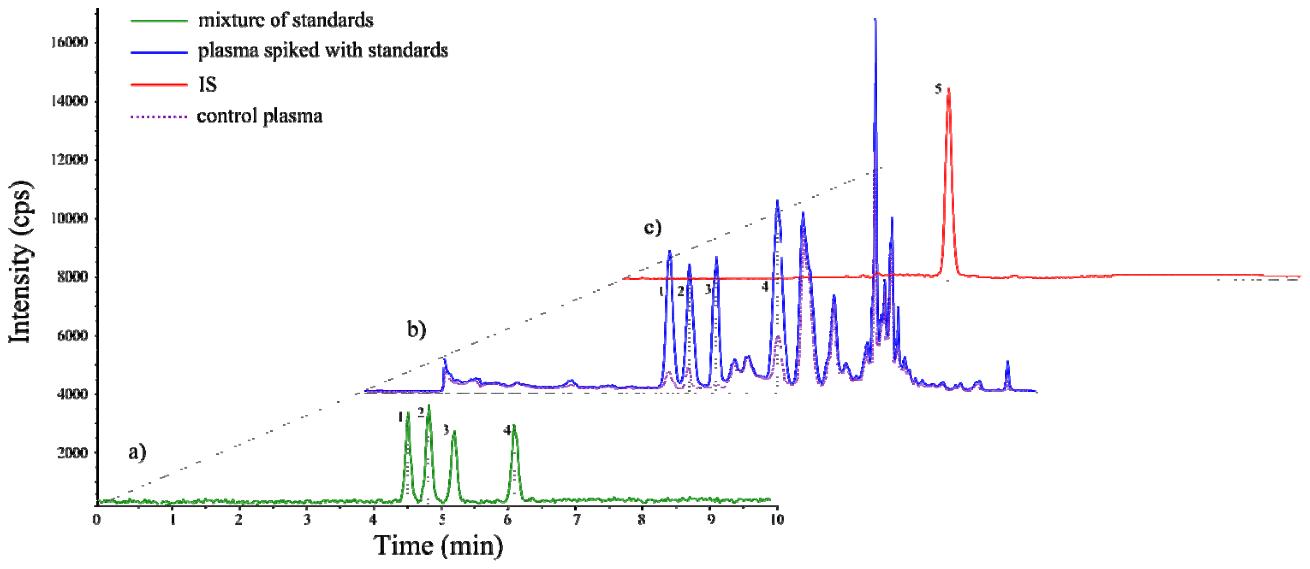 LC-MS/MS chromatograms showing: (a) four isoprostane standards, (b) control and spiked plasma samples after SPE, and (c) internal standard (I.S.).
LC-MS/MS chromatograms showing: (a) four isoprostane standards, (b) control and spiked plasma samples after SPE, and (c) internal standard (I.S.).
Reference
- Janicka, Monika, et al. "LC-MS/MS determination of isoprostanes in plasma samples collected from mice exposed to doxorubicin or tert-butyl hydroperoxide." International Journal of Molecular Sciences 14.3 (2013): 6157-6169. https://doi.org/10.3390/ijms14036157
FAQ of Isoprostanes Analysis Service
Can I analyze both free and esterified isoprostanes in my samples?
Yes. We offer separate or combined analysis of free isoprostanes in biological fluids and esterified forms embedded in tissue or lipid matrices.
Are your methods capable of distinguishing isoprostane isomers?
Absolutely. Our LC-MS/MS methods achieve high-resolution separation of isomeric compounds, enabling precise identification and quantification of individual stereoisomers.
Can I request analysis of specific isoprostanes not listed in your standard panel?
Yes. We offer custom method development and can expand our panels to include additional isoprostanes or related metabolites relevant to your research.
What level of data interpretation do you provide?
Our reports include raw data, quantitative results, and optional bioinformatics support, such as pathway mapping and data visualization, to assist in biological interpretation.
Do you provide internal standards for quantification?
Yes. We use isotopically labeled internal standards to ensure precise and accurate quantification across all analyses.
Are your services suitable for food or nutraceutical samples?
Definitely. We routinely analyze isoprostanes in diverse matrices, including food oils, supplements, and plant extracts, supporting applications in nutrition and food quality studies.
Is there a minimum number of samples required for analysis?
No strict minimum exists. We handle both small-scale pilot studies and large-scale projects and can tailor the approach accordingly.
Learn about other Q&A about proteomics technology.
Publications
Here are some of the metabolomics-related papers published by our clients:

- Methyl donor supplementation reduces phospho‐Tau, Fyn and demethylated protein phosphatase 2A levels and mitigates learning and motor deficits in a mouse model of tauopathy. 2023. https://doi.org/10.1111/nan.12931
- A human iPSC-derived hepatocyte screen identifies compounds that inhibit production of Apolipoprotein B. 2023. https://doi.org/10.1038/s42003-023-04739-9
- The activity of the aryl hydrocarbon receptor in T cells tunes the gut microenvironment to sustain autoimmunity and neuroinflammation. 2023. https://doi.org/10.1371/journal.pbio.3002000
- Lipid droplet-associated lncRNA LIPTER preserves cardiac lipid metabolism. 2023. https://doi.org/10.1038/s41556-023-01162-4
- Inflammation primes the kidney for recovery by activating AZIN1 A-to-I editing. 2023. https://doi.org/10.1101/2023.11.09.566426
- Anti-inflammatory activity of black soldier fly oil associated with modulation of TLR signaling: A metabolomic approach. 2023. https://doi.org/10.3390/ijms241310634
- Plant Growth Promotion, Phytohormone Production and Genomics of the Rhizosphere-Associated Microalga, Micractinium rhizosphaerae sp. 2023. https://doi.org/10.3390/plants12030651
